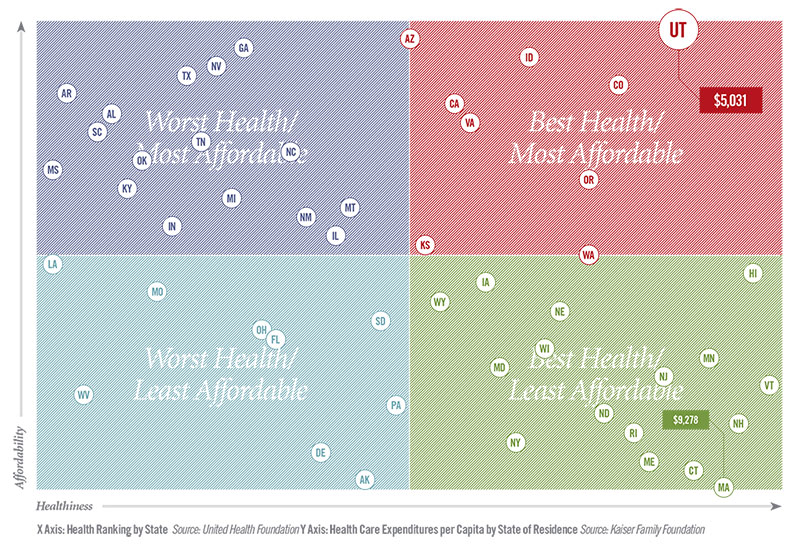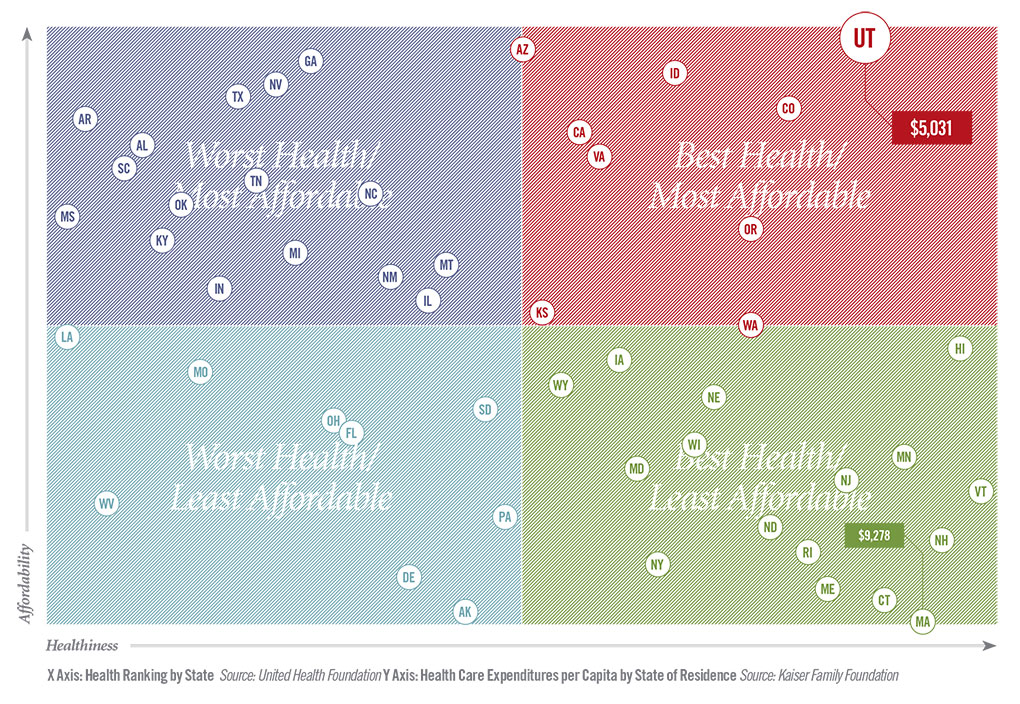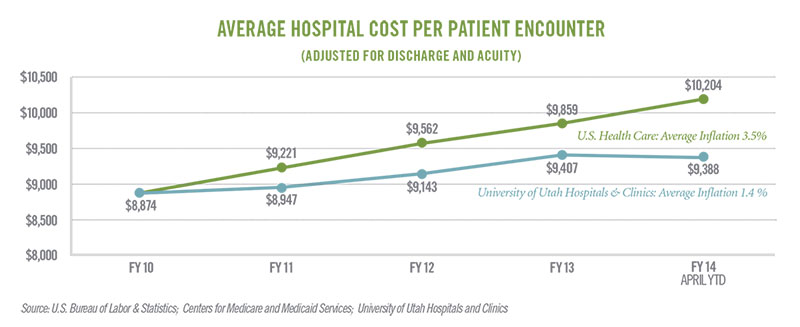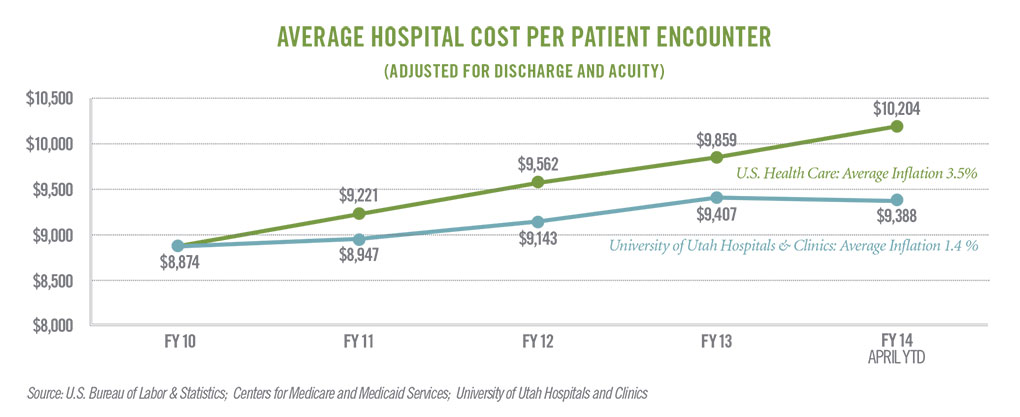Bending the cost curve: The Utah Way
In the race for better, cheaper health care, Utah comes out on top. No other state spends less per capita and few register higher on the wellness meter.
There’s a national debate about how spending affects health. Louise Sheiner, Ph.D., senior fellow and policy director at The Brookings Institution, points to a number of possible explanations, including demographics, access to care, social supports, education and variation in how doctors practice medicine. “All these factors are correlated and tough to disentangle,” says Sheiner.
Doubtless, some of our success is due to demographic luck. We’re a young state with the lowest median age in the country. About 40 percent of Utahns are active in the Church of Jesus Christ of Latter-day Saints, which eschews alcohol and tobacco. That healthy lifestyle contributes to lower rates of chronic disease, including obesity, diabetes and stroke. Utah is also home to three top-rated health systems recognized for delivering low cost, high quality care.
Whatever the root cause of our success, we’re not taking it for granted. These past few years, University of Utah Health Care has started to bend the cost curve, charting a slight decline in our average cost per hospital discharge in FY14. We’re doing that by getting a handle on our costs, through our Value Driven Outcomes (VDO) tool (see page 12), which can break down the cost of any procedure or episode of care. We’re also getting Lean, focusing on continuous process improvement as an integral part of our culture.
It’s true that Utah may be demographically worlds apart from Mississippi or Massachusetts. But instead of looking overseas for answers to America’s health cost problem, there may be lessons to be distilled from closer to home – from the Utah model.




